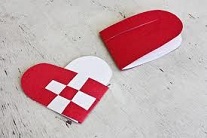Looking for a set of Swedish carving knives for your kitchen? Read on for more info on the best stainless steel knives from Sweden…
The reason that the phrase “Swedish steel carving knives” may already be somewhat familiar to you is that the Swedes are justifiably renowned for producing both quality steel as well as carving knives that are prized the world over.
Perhaps the finest example of a carving knife currently produced in Sweden is the Mora knife. The town of Mora in the Dalarna region of Sweden is where this kind of knife originated and where most Swedish steel carving knives that are called moraniv in Swedish are still made today.
The traditional techniques used to make these knives hearken back to the sword smithing practices first employed in the Middle Ages. Three slabs of steel were used to forge a single blade for a Mora knife. The middle section of the steel “sandwich” that comprises a finished blade on a Mora knife was most often crucible steel known for its durability and impeccable quality. The outsides of the blade were made softer of steel with more give and added resilience. Through the ages the knife smiths from Mora developed a basic, functional style of knife that eventually became known simply as the Mora knife.
Mora knives have, for the most part, been produced by two firms: KJ Eriksson and Frosts Knivfabrik. In recent years these two companies have built a merged brand identity under the “Mora of Sweden” banner.
Swedish design skill and steel quality has also produced a different sort of carving knife intended for a somewhat different purpose. The Swedish also developed a steel called Sandvik. Originally created for the manufacture of surgical instruments it is now employed for carving knives that needs to achieve both reliability and razor sharpness. To this day it is still frequently referred to as “Swedish steel” or “surgical steel”.
Carving knives made with Sandvik steel exhibit similar characteristics of softer carbon steel (i.e. ease of sharpening and the ability to attain a razor sharp edge). Yet Sandvik steel is notably harder and knives and other instruments made with this steel are better able to retain an edge.
Another noteworthy Swedish carving knife is called the sloyd knife. Sloyd knives are only about 5″ in length. They are distinguished from similar knives by their barrel-shaped handles. In fact the folding version of the sloyd knife is often called a “barrel” knife.
Most Swedish carving knives of any variety are exceptionally sharp and (unlike most kitchen knives) are not furnished with a guard of any kind. This allows the user the freedom to make cuts that one could not make otherwise with a guard-equipped knife, but one must be careful not to cut oneself. The cuts could prove injurious due to the sharpness of the blades.





